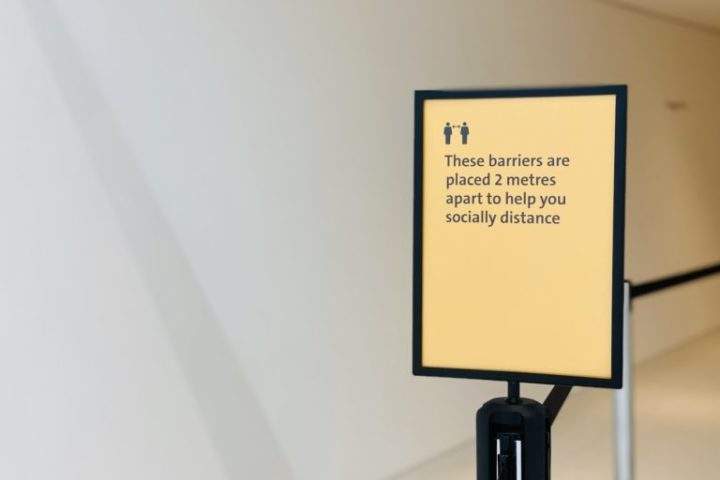The Covid-19 pandemic is still seriously affecting museums and cultural venues around the world. This is underscored by a new report by ICOM (International Council of Museums, the main body representing museums around the world) released on Nov. 23, releasing data collected from Sept. 7 to Oct. 18 on nearly 900 museums (50.7 percent in Europe, 9.1 percent in North America, 18.6 percent in South America and the Caribbean, 6.2 percent in Africa, 2.2 percent in Arab countries, 10.8 percent in Asia, and 2.4 percent in Oceania). The survey reveals that the situation has improved somewhat since last spring: the May ICOM report, conducted on 1,600 museums, focused on a situation in which 94.7 percent of museums remained closed. Now, however, the landscape is much more diverse: in Europe and Asia several museums were reported to be open during the survey period, while in Latin America and the Caribbean most remained closed.
In fact, 51.3 percent of museums worldwide were open between September and October, with peaks of 79 percent in Europe (where only 2.6 percent remained closed altogether), followed by Asia with 49.4 percent of museums open. Different situation, however, in South America (51.9 percent of museums closed) and Africa (41.2 percent). These are mostly small and medium-sized museums (the survey covered museums that, in the pre-Covid period, had fewer than 20,000 visitors in 42.8 percent of cases: the numbers dropped dramatically from January to October in 2020, as museums dropped to fewer than 20,000 visitors in 71.3 percent of cases, with as many as 46.2 percent remaining below the 5,000 threshold). Of the 5.4 percent of museums that were doing more than 1 million visitors in 2019, only 0.4 percent remained that confirmed above this threshold.
Museum professionals have started working on-site again (museums have on-site workers in 79.7% of cases), but remote work is still a reality especially in South America, North America, and Oceania. Fourteen percent of respondents to the questionnaire said that some staff had been fired or put on leave, with a clear disproportion between different areas of the world (fired on average 22 percent of staff in North America and 20 percent in Oceania, while in Europe the figures stop at 4.3 percent).
As for the economic impact, almost all museums expect losses: 49.6 percent even think they will have lost about a quarter of their income in 2020 (9.8 percent believe they will have lost more than 75 percent, 5.7 percent more than 90 percent). What is serious is that in 51.1% of cases museums did not have access to any forms of financial support (instead they received emergency funds 23.9% of museums, compensation 7.1%, emergency tax revenues 5%, forms of unemployment benefits 26.6%, resources from fundraising campaigns 7.2%, and rent or mortgage suspension 2.9%). 67.4 percent of museums believe Covid will reduce public programs, 62.4 percent think it will reduce exhibitions, while 30.9 percent believe it will reduce staff and 46.1 percent believe it will lead to the suspension of term contracts. Still, 50.4% believe the pandemic will weigh on opening hours, 40.4% think it will cause loss of private support, while 33% imagine it will lead to loss of public funds. Fortunately, only 6.1% now think the pandemic will cause the museum to close (the percentage has halved from May’s estimates).
Museums have also continued to boost their digital activities, which have increased by an average of 15 percent worldwide (with peaks of 50 percent when considering only social media, live streams, or educational projects). The percentage of museums that started a new media channel also increased. Most museums, however, lack specialized staff: only 21.8% have dedicated staff, while 56.8% have staff who are dedicated to digital not full-time, and for 21.5% of museums there are no dedicated digital staff. Most importantly, little is still spent on digital: only 12% of museums spend more than 10%, while 50.1% of museums devote less than 5% of their budgets to digital (with 19.7% spending less than 1%). Most popular are social media and newsletters, less so podcasts. Interestingly, after the lockdown, 76% of museums consider rethinking their digital strategy, and 74.8% think they will increase their offerings in this regard. On the other hand, 53.8% will train staff, 43.2% will increase resources, and 28.7% will increase staff in an online key.
As for reopenings, almost all museums have equipped themselves with safety devices: regular sanitization in 95.5 percent of cases, hand gel in 96.2 percent, restricted access in 90.2 percent, spacing in 92.6 percent, closure to group visits in 80.2 percent, and visitor temperature control in 45.2 percent of cases. 58.6% believe the main threat to their museum is the inability to reopen (same percentage think it will be hard to attract visitors again). On the other hand, the threat for 44% of museums is the lack of visitor welfare, for 38.7% the loss of contact with the community, for 32.3% the difficulty in paying staff salaries, and for 12.3% the security of collections.
“We do not claim that these data represent all museums,” ICOM points out, “but the responses received highlight a widespread climate of uncertainty about the future, and the need for governments to respond to ensure the future of these institutions and the priceless cultural heritage they preserve. Museums are an essential part of the identity of peoples and nations, a vital part of the communities they serve and a central element of local development.”
 |
| New ICOM report on museums affected by Covid: 62% plan to reduce exhibitions |
Warning: the translation into English of the original Italian article was created using automatic tools. We undertake to review all articles, but we do not guarantee the total absence of inaccuracies in the translation due to the program. You can find the original by clicking on the ITA button. If you find any mistake,please contact us.